The coexistence of man has made him what he is – a social being. In linguistic, communicative exchange, common values and ideas can be socialized. Not only the one with the other determines the way of living together, but also very strongly the respective environment. So there are other behaviors and abilities when living as an Eskimo in Greenland ice or if you live as Aborigines in Australia.
Such an environment is then common to all and the sum of the resulting behaviors, abilities and values is called culture. As definition for culture could apply:
As a culture, one understands all those behaviors and attitudes that are shared by a group, are usually not written down and sanctioned in the event of non-compliance. Compliance with these standards determines whether or not you belong to this group (culture).
In the beginning of humanity it was mainly the natural environment that decided on the culture. From this nature religions developed. The interaction has then led to people making artificial objects such as. simple tools, developed and thus enriched the environment. Throughout history, up to the present digital age, humans have massively expanded the natural environment, which in turn has led to completely new cultures. The development of technology had a tremendous influence on the change in the environment, so technology is significantly responsible for cultural development. One therefore speaks of cultural engineering.
Only through the colonization and then through globalization, the most diverse cultures have become aware of each other. It has been recognized very quickly that these are not very compatible. The north, with its sober rationality, does not fit the southern temper, which we feel good about in European integration. Capitalism of the West is also difficult for the TAOists of Asia to understand. The Dutch sociologist Geert Hofstede looked at this problem from an economic point of view and developed six different cultural dimensions, the so-called cultural dilemmas.
Below is a brief description of these dimensions:
Power Distance (PDI): This dimension describes the perceived distance between parent and child people. In societies with a very strong and steep hierarchy, the gaps are very large. It’s not so easy to get a personal audience with the Pope – it takes a lot of middlemen. The same applies to many CEOs in the West, even there you can not just call. The flatter the hierarchies, the less the perceived distance. In most western companies, you can contact your manager directly and talk casually. At the end of the 20th century, the concept of VIP emerged. People with this attribute were treated preferentially. In today’s digital world, which hardly knows hierarchies, people are treated very equally. When booking a hotel through booking.com, it does not matter which social class you come from.
Individualism (IDV): Hierarchies are usually associated with a collective, very uniform, social organization. In particular, religious communities are attracting this attribute. Collective also means that only members of the group are accepted. Once you are there, it is almost impossible to get out. Striking examples of this are: Chinese society, the Amish or the Scientologists. In the digital world we are all individualists – at least that’s what we mean. We can do almost anything we want and believe that the decisions are the same. lie with us. Interestingly enough, people buy exactly those garments that are declared “modern” by the clothing industry. If violet is announced, next autumn, most are dressed so. There is then not much to see of individualism. The big internet companies – Amazon, Facebook, etc. – do not have 1 billion individual biographies, but only a few (<100) personas with which they describe the whole world.
Masculinity (MAS): When human culture developed in the African, Arab world, it was a very patriarchal one. The man was the leader of the society, was god and head of the family. Women have hardly appeared in public. It is also understandable why the three great book religions were developed on this culture. In Europe, the French Revolution, with equality, freedom and brotherhood, has come to the realization that women are equal. This is enshrined in the constitution in almost all European countries and above all in the USA. No discrimination against women. In the last few years, a lot has changed in the West. In the Islamic culture we are in the comparative Middle Ages. If you share blog articles on Facebook, they will be “balanced” in the industrial zone. The same article in India leads to a massive (90 M: 10 F) weighting.
Uncertainty Avoidance (UAI): is a very obvious dimension in which cultures differ. Very superficially speaking, northerners have more discipline than southerners – a striking sign of discipline is punctuality. Employees of market-oriented companies are very close to schedules, are always prepared and deliver their work on time. In a highly complex world where everyone and everything are interdependent, discipline is a must. Religions sometimes demand very iron discipline from their staff. Sexual intercourse prior to marriage is strictly prohibited, long mediation and prayer hours are required and during fasting little or no food. In western secular countries, religious discipline has given way to an economic one. Although with social media and cloud computing this is getting more and more softened. We can see many people coming into a permanently over-excited state through their smartphones. E-mails and SMS are answered immediately. Hardly anyone waits a certain time to do so. The pop-up mentality leads to a lack of discipline.
Long Term Orientation (LTO): The short-term nature of capitalist societies is reflected in the return on investment. Invested money must be earned back very quickly, otherwise the business is not just a business. This phenomenon is quite blatant in the cryptocurrencies, the course of which can change during the course of the day by 30% or more. Everything that is not feasible today is to be forgotten. This culture of the short term has certainly been accelerated by digitization, but is fundamentally rooted in Western philosophy of Christianity. As a result, man must qualify for eternal life within his life span. Life here in the world is extremely short. In contrast, eastern philosophies with the re-culture approach have a long-term orientation. You have to prepare for the next one already in the present life. Long-term investments (Silkroad) are therefore more likely to be expected in China than in Europe.
Indulgence (IVR): This dimension was recently introduced by Hofstede and is concerned with enjoyment and reluctance to do so. People who live in consumption and abundance need not hold back – it is all there and just waiting to be used. Traditional religions, whether East or West, have trained us for centuries for renunciation and restraint. For almost all beliefs, sexuality is strictly forbidden before marriage. Can lead to the death penalty for women in Arab countries. Digitization opens up additional channels of enjoyment for us. The two essentials are “Gameing” and “Youporn”. After 40 years of high consumption, many people ask the question of meaning and it is not surprising that many find their way back to a careful use of resources. Overpriced gala dinners, cruises and expensive cars no longer have to be. Even when eating, especially with meat, more and more restraint can be seen.
The chart of “Country Comparison” shows the comparison between USA, China and Austria. According to Hofstede, a difference of 10% is already noticeable when dealing with people from other cultures. The diagram shows four outstanding cultural moments. In China, the power distance is very high at 80 percent. In business contact with Chinese colleagues is hardly a direct decision to get – it must always and repeatedly in higher demand. At the same time, individuality is very low in China, possibly due to the welfare state system. The Americans are known for their individuality. This dimension has the comparatively highest expression between these states. Very interesting and not so suspected by the Austrians is the masculinity of 79%. In addition, the Austrians with 70% are very focused on security. What has been described above for the Asian region already under the topic “Long Term”, also applies in this country comparison for China. Under the following link many countries and especially their comparison can be set and viewed.
The dimensions of Geert Hofstede are not invalid in a digital world, but additional attributes are added. What we are currently experiencing is the development of a global culture. This can be described with the 5 parameters Uniformity, Access Rights, Mixed Reality, Multi Linguistics and Relation. These expressions are not polar and therefore do not describe any dilemmas, but show the degree of development of a digital cultural world. Culture arises mainly through the reaction of a community to the environment in which it lives. The digital techniques have changed the environment as never before in human history. It is therefore not surprising that the culture also changes very quickly because of this. This change is also completely new, because culture has been something very stable over the last few thousand years. Christianity has been around for 2000 years, and Egyptian antiquity has survived for 6000 years. The following dimensions for describing a global digital culture are preliminary:
Uniformity Efficiency: We are currently enjoying an unprecedented wealth of products and services. If you live in a capitalistic environment, you can afford it. The prices for smartphones, cars, streaming services, etc. are so cheap, because they are manufactured in extremely high quantities. The smart devices show that very clearly – actually, there is only one more manufacturer (Foxcon) of these devices anyway. They are available in the two versions Samsung and Apple. If you do not look so closely, these two products are actually the same. There is no difference in appearance, operation, benefits, etc. This creates a uniformity in which all people have the same. We will experience similar phenomena in the automotive sector, here too, there will soon be only one or two manufacturers, which then produce the same for different brands. Therefore, we will no longer differentiate ourselves over products and services in the future. Then other dimensions such as creativity, empathy and the resulting personality profile will become meaningful.
Access Rights – No Property: Being very closely associated with the personality will in the future be the rights that this person has. The first signs that we have less and less ownership and more usage rights are shown by the streaming services, airbnb, etc. The current economics of ownership will shift to a shared economy. This, too, will change the culture in such a way that self-esteem can no longer be represented by possession. People will therefore also find other differentiation and affiliation characteristics here. It is quite possible that groups such as the alchemists from the Middle Ages will emerge again, who have secret knowledge, which will then be shared via cloud systems. Access then just have exactly those who have Access Rights. The easiest way to access access is to have money or to be selected by a group.
Mixed Reality – Everything is uncertain: In the past, “everything” was already quite uncertain. If you were fortunate to have been born in a peaceful and economically prosperous region of the world, you did not have any particular fears for the future. Of course, we can get sick and throw ourselves off course. At least you could rely in the past on sensory perceptions. The better the better a person manages to turn off the social filters. With the high-resolution, multi-sensory virtual reality, it is very difficult to distinguish between reality, reality and virtuality. This makes the environment even more uncertain. It is already the case today that we can no longer check messages that we get on social media if they correspond to reality. Any reality – whether artificial, mental, physical or similar – will definitely be the same. On a TV screen, even though we see a 3D image, we still know it’s artificial. The development of holograms and even more striking the emergence of androids means that we can hardly recognize what is real and artificial.
Multi Lingustik – digital beings: These androids belong to a completely new species of digital beings. An intermediate step could be the cyborgs – beings that consist mainly of a human body with artificial enlargement. Moreover, there will be disembodied beings in the form of artificial intelligence with whom one can only communicate. Such an example was shown in the feature film HER. The leading actor Theodor has fallen in love with his computer assistant with female language. The dialogue was then actually conducted as it happens to people in love. An essential feature of artificial intelligence will be its ability to communicate directly in human language. This ability will not be limited to one language, but at the same time many can be multilingual. Siri currently only understands either or, whereas Google Now can English and German at the same time and mixed and already act well. In general, AI will learn human language and we will talk to it through this medium. In addition, KI will adapt to the content of each subjective human intelligence. Smarter questions will evoke higher quality answers. Therefore, especially for children and at school it will be the most important thing to learn a language in the highest perfection. If you can not get a 10-finger system today, you do not need to learn any more.
Relations – Trust: What will we be able to rely on then? Unfortunately, the statement of Rene Descartes “I think so I am” no longer hold. Human thinking will change as a result of the influence of Mixed Reality so that you just can not rely on it anymore. We are likely to be “remembered” more and more. This leaves only one single security and that is the relationship with another person. Only in this way will we learn about ourselves in the future. We need people to whom we have a closeness relationship to build trust over time, then let us get so close to ourselves that we can determine our own selves. The sentence of Descartes will be in the future: “I refer, so I am”. The need for relationship and the trust that comes with it will most affect the digital culture. Even if we have large social networks, trust will build up on a small scale. However, it is not mandatory that this has to be a relationship to biological beings; digital assistants can also play that role. If they do, they will have to go beyond a much higher confidence threshold.
In conclusion and in summary, it should be noted that culture is essentially shaped by the environment in which a society lives. The biggest technological revolution is the digital and connected we expect the biggest cultural revolution.
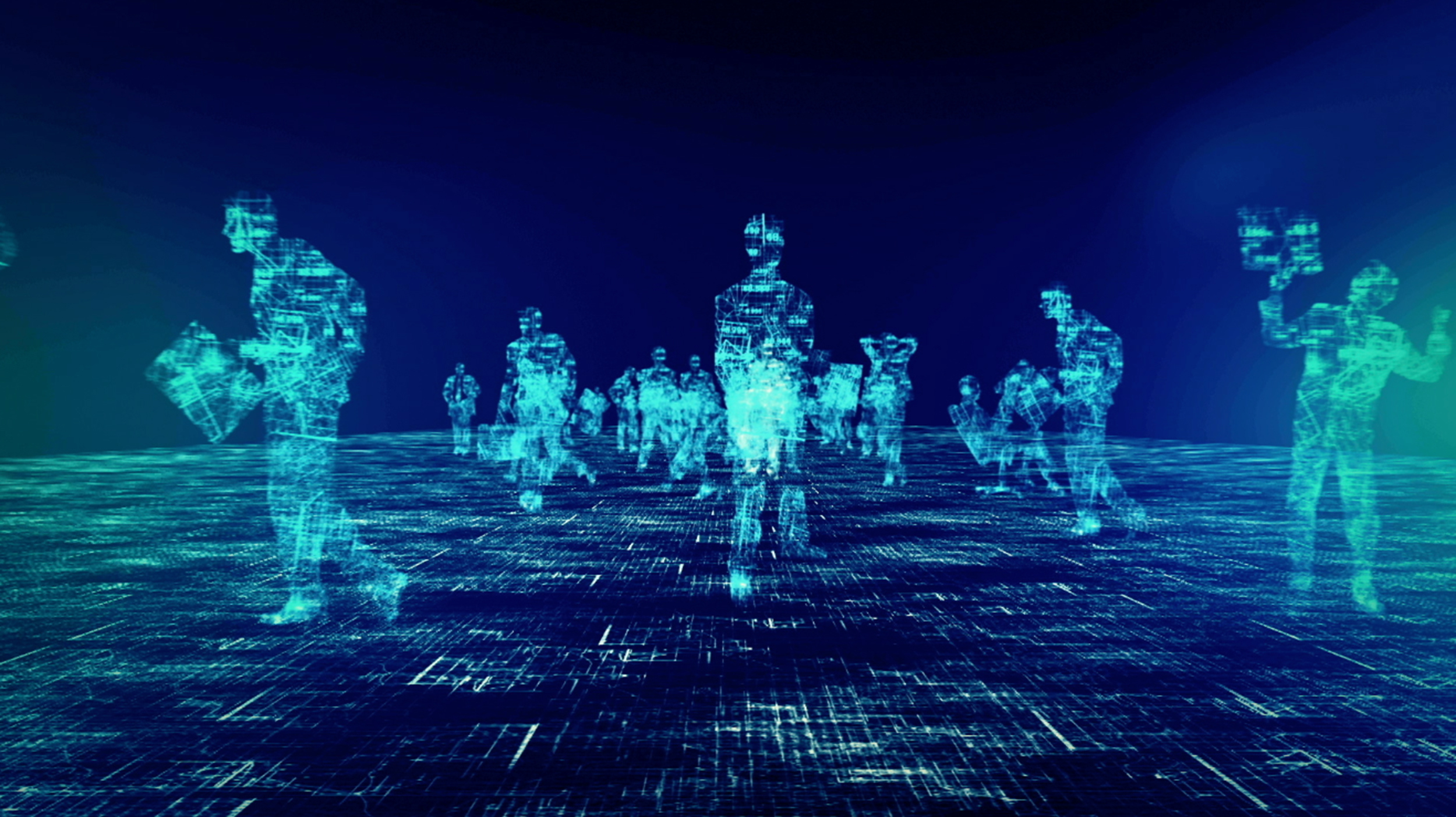
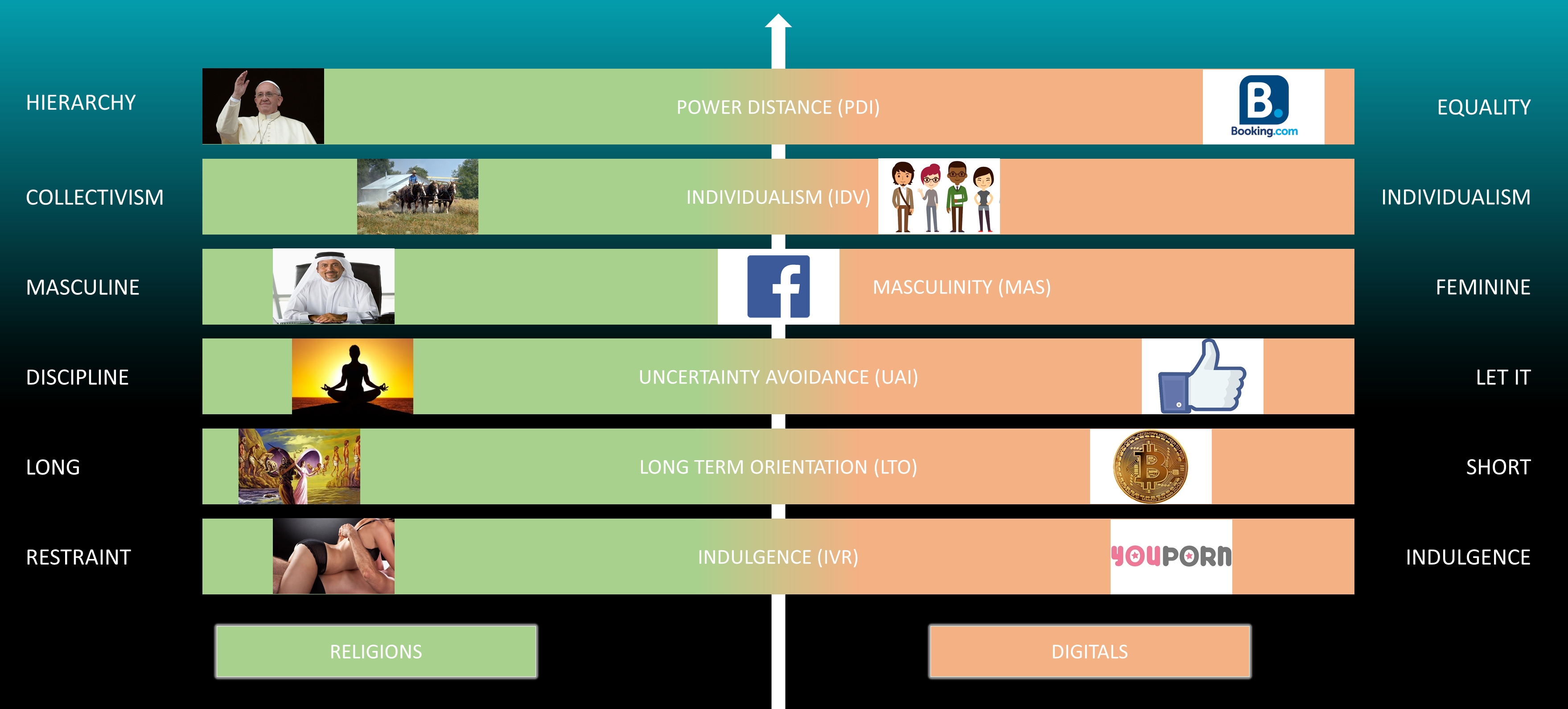
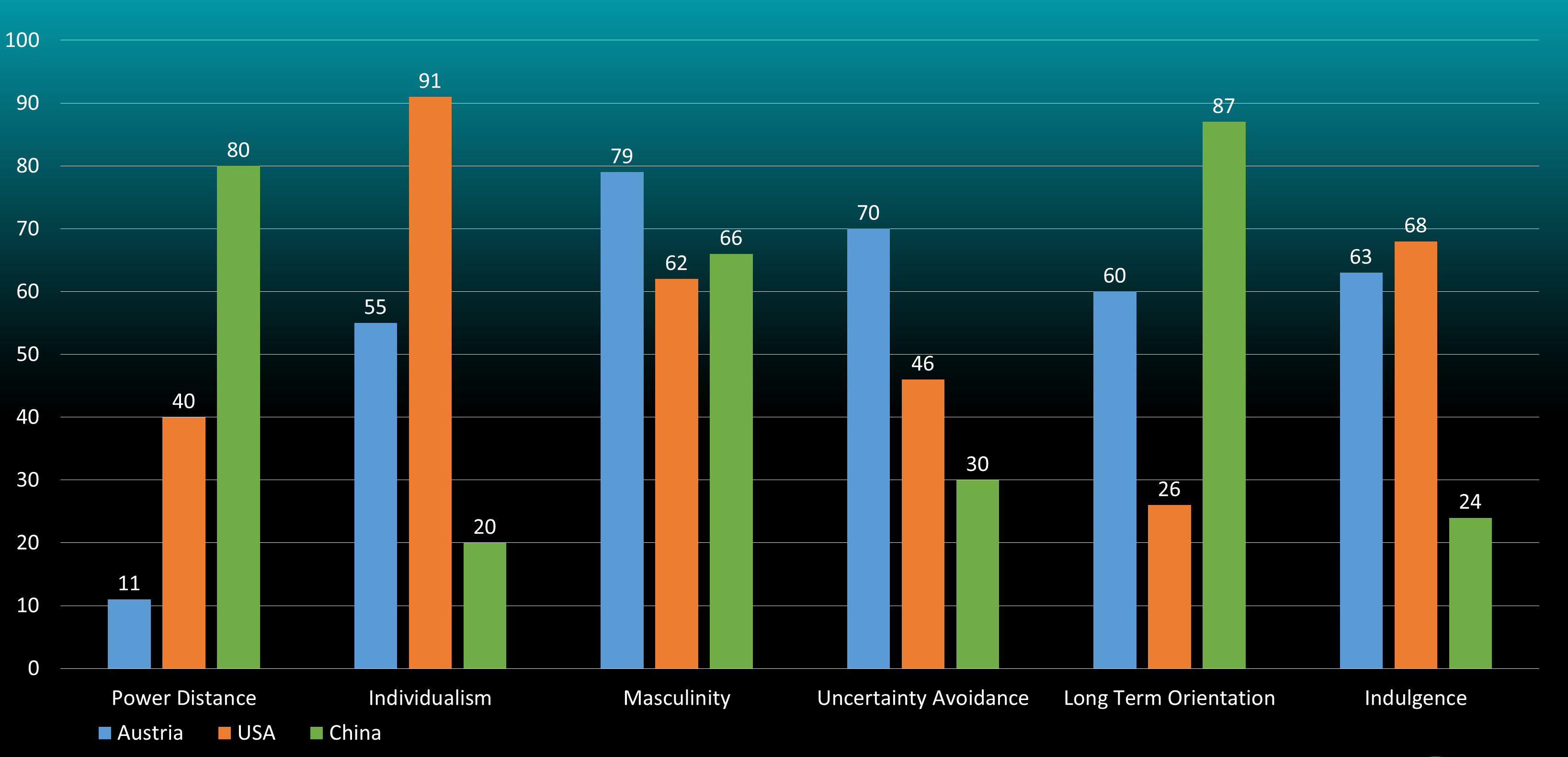
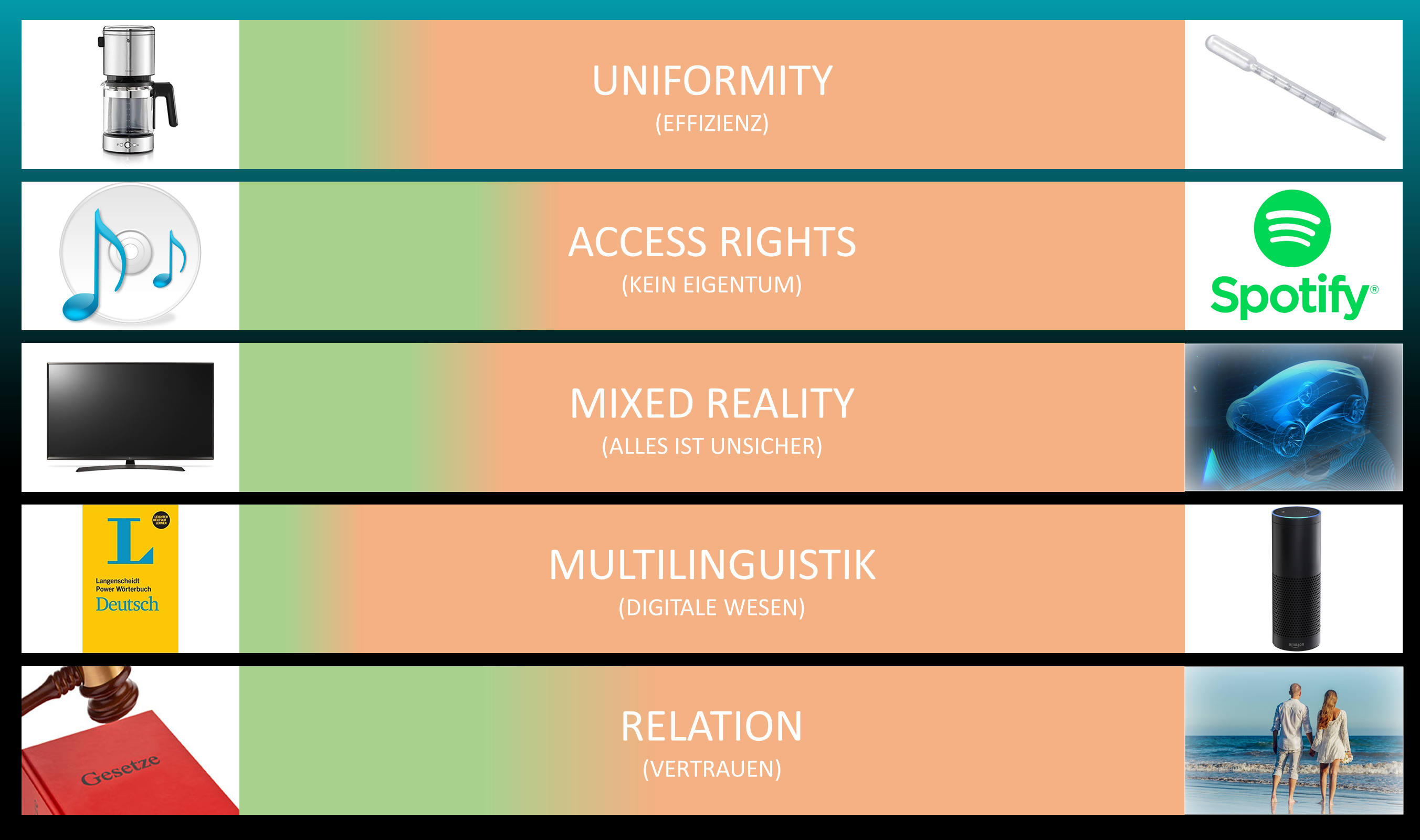





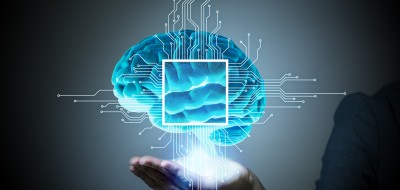
 Deutsch
Deutsch English
English